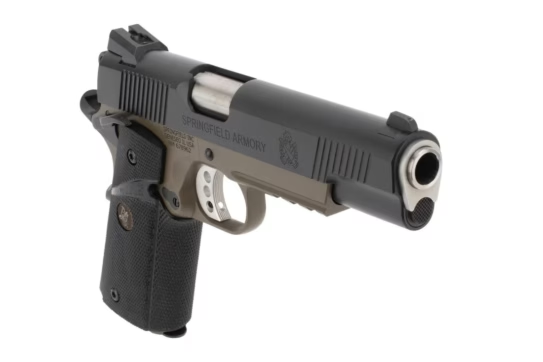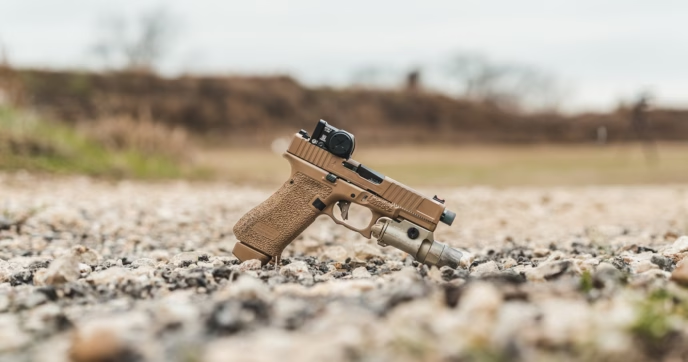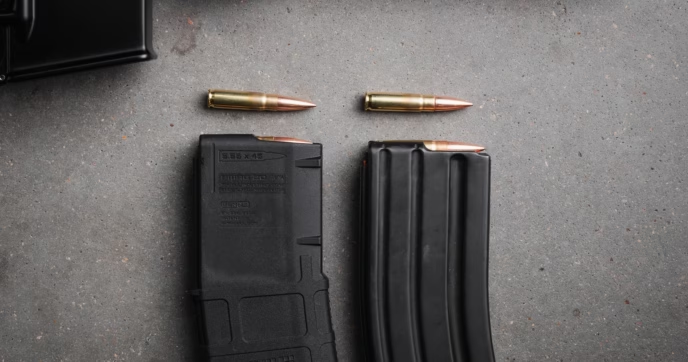There aren’t many handguns that have garnered the same level of renown as the 1911—even over a century after its inception, its timeless design has remained a favorite amongst enthusiasts. And while the core design of the 1911 has remained relatively unaltered, over the years, they’ve been adapted to feature more compact frame sizes to better improve their concealability.
Depending on the model 1911 you look at, the overall size of the handgun can vary drastically, ranging from your traditional full-size models to smaller, more compact options. With variety comes choices—and choosing the right frame size is paramount to ensuring your 1911 is both practical and comfortable to shoot.
Fortunately, despite there being dozens of brands producing 1911s, most of them fall into one of three common sizes: Government, Commander, and Officer. Below, we’re looking at these common 1911 grip sizes and highlighting how they differ from each other.
Different 1911 Frame Sizes
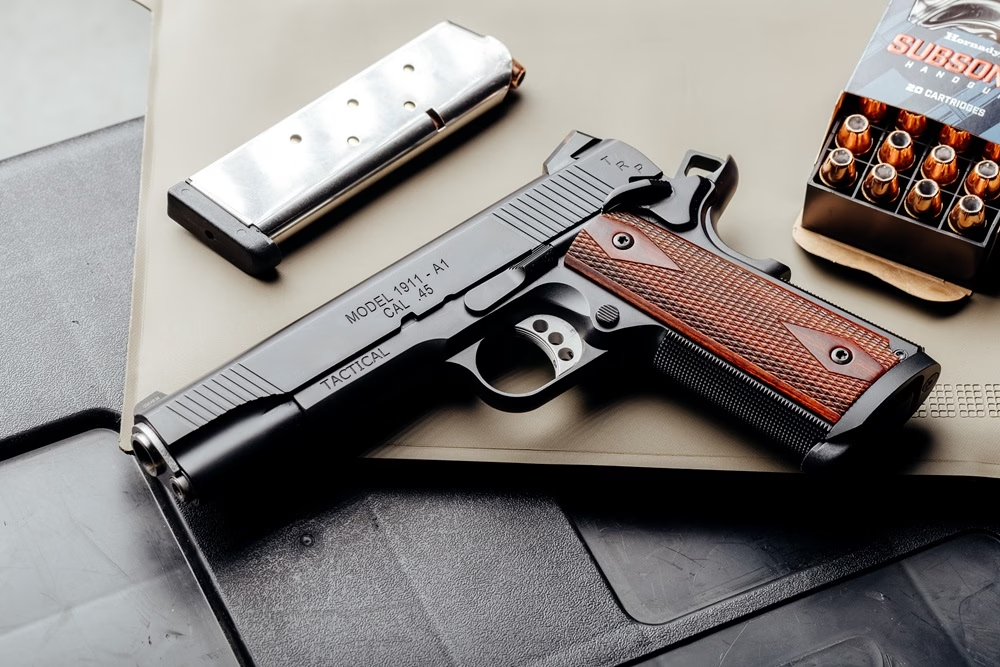
Government Size (Full-Size)
Government model 1911s are one of the most recognizable 1911 models around, calling back to the pistol’s original design and size. Of the traditional 1911 frame sizes, Government models are the largest, boasting a 5-inch barrel and an overall height of 5.5 inches.
Traditionally, these pistols have a standard capacity of 7-rounds of .45 ACP, but depending on the make and model, some can carry up to 8-rounds in a flush fitting magazine. Alternatively, you can opt for 9mm 1911, which can have a standard capacity of up to 10 rounds. These pistols maintain that classic look and feel of traditional Government model 1911s, but they carry more ammunition due to 9mm’s smaller size.
Something to keep in mind when looking at these pistols is their weight. In general, steel frame Government model 1911s weigh around 39 ounces (nearly 2.5 pounds) unloaded. You can get a lighter overall pistol by opting for an aluminum frame 1911, but they can still weigh upwards of 2 pounds, depending on the model.
Regardless, Government 1911s are still incredibly versatile, being commonly used for home-defense, duty, competitive shooting, and simpler recreation. Being one of the most common 1911 sizes, there are a lot of Government size 1911s to choose from, since multiple manufacturers produce pistols of this size. Bear in mind that the size and weight of these pistols can make every day carrying a challenge, with printing being a common concern. With the right holster, belt, and clothes, it’s possible—but it’s worth keeping in mind if you’re looking for a new carry gun.
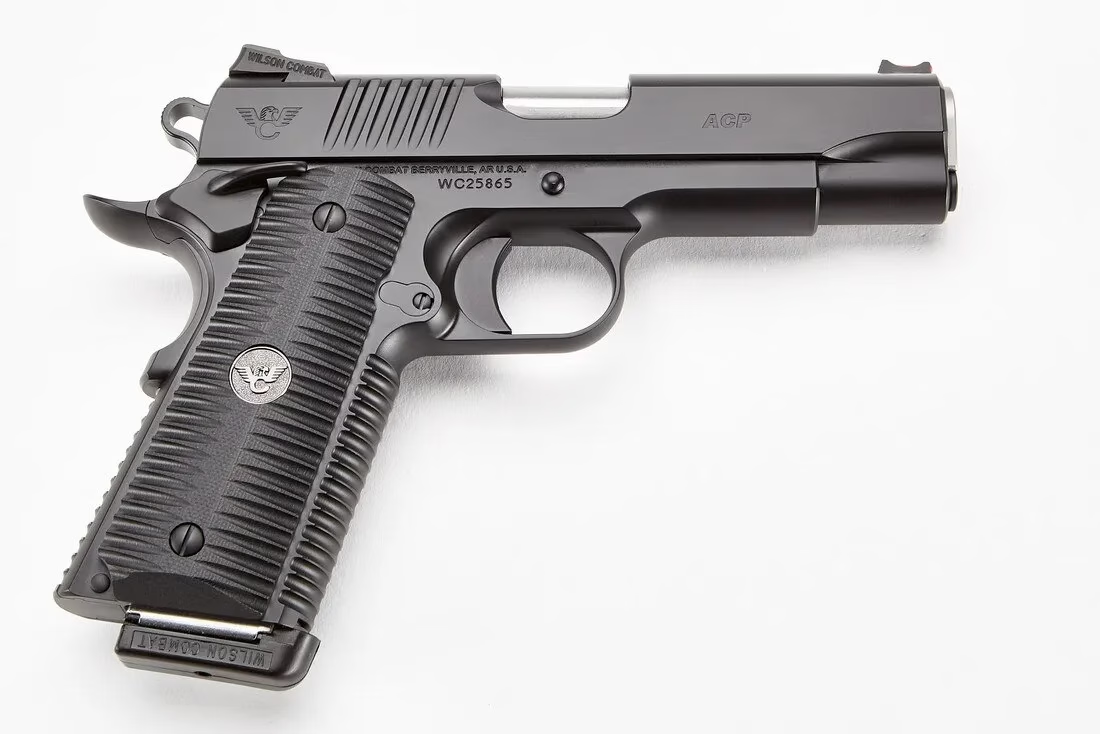
Commander Size
The Commander size 1911 was first introduced in 1949 and was designed to be lighter and more compact than the standard Government size. While in service, they were primarily issued to officers, and they used an aluminum frame instead of steel one for weight reduction. Soon after their creation, they were introduced to the civilian market by Colt, and as their popularity grew, they began to produce steel frame versions too. Today, they’re produced by multiple manufacturers, and are some of the most popular 1911 variants available.
Despite their smaller profile, Commander size 1911s actually use the same frame as Government models, making them compatible with standard 1911 parts too. The primary difference between the two is the slide and barrel length. Commander size 1911s are equipped with a shorter 4.25-inch barrel, making it more akin to what’s known as “carry-sized” today. Consequently, these pistols have a standard magazine capacity of 7 to 8, or 10 rounds depending on whether you opt for .45 ACP or 9mm.
One of the main advantages Commander size 1911s offer is their reduced weight. As mentioned above, 1911s are not typically known for being the most lightweight pistols on the market, but by shortening the barrel and slide, their overall weight is marginally reduced. Steel-frame Commander 1911s tend to weigh around 35 to 36 ounces (around 2.25 pounds), while aluminum frame models are lighter, weighing closer to 30 ounces (1.875 pounds) or less. They’re still heavier compared to more modern pistol platforms, but their reduced weight compared to Government 1911s makes them easier to carry.
As such, they’re favored by many for everything from concealed carry and duty use to recreational and competitive shooting—especially since they’re compatible with full-size 1911 magazines. Still, it’s important to bear in mind that printing can still be an issue since they use a full-size frame. Although Commander size 1911s are easier to conceal given their lighter weight, the frame is still the same size as a Government model. Consequently, if you aren’t careful, they can still print when carrying if you aren’t wearing clothes that adequately conceal it. That said, if you can dress around it, a Commander size pistol can still be a great option for concealed carry.
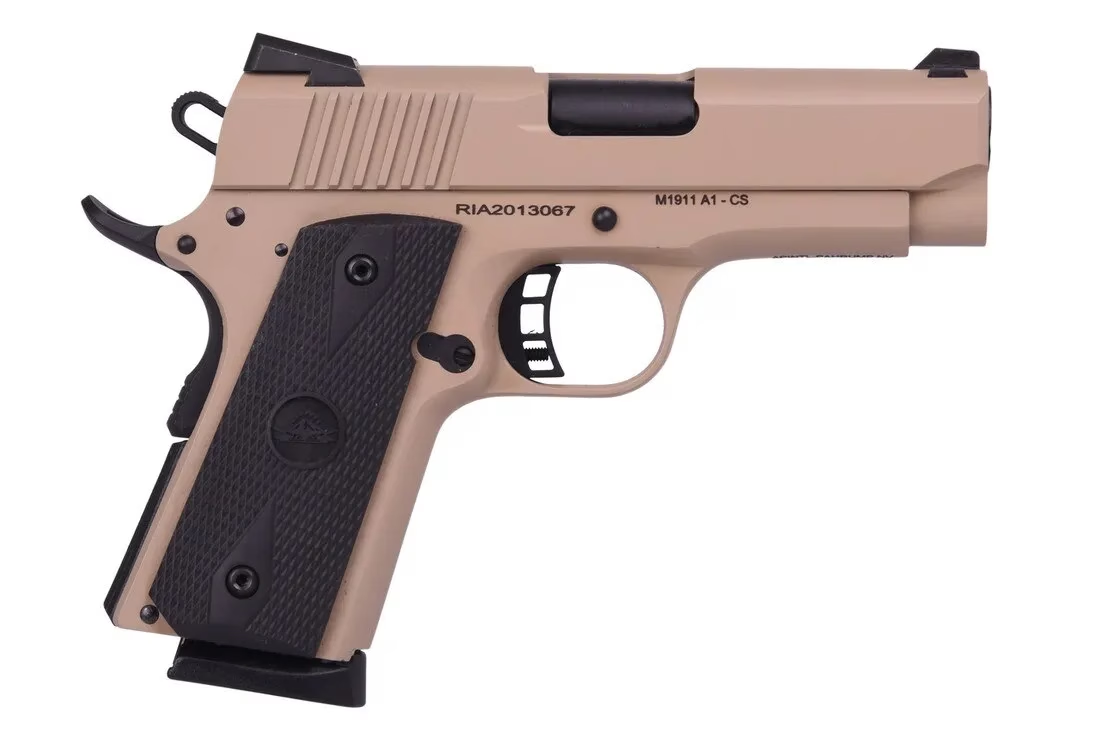
Officer Size
Officer sized 1911s are the most compact of the traditional 1911 sizes. Originally, Rock Island Arsenal crafted a compact frame 1911 they called the General Officer’s Model Pistol, which was made exclusively for General Officers in the Army and Air Force. Not long after, Colt began producing a similar pistol of their own design, known as the Colt Officer’s Model 1911, which was made available for the civilian market. Afterwards, 1911s of the same size became colloquially called Officer size.
Being a more compact option, Officer size 1911s come equipped with a 3.5-inch barrel, and a smaller/shorter frame. With their shorter frame height, they don’t have as high a magazine capacity as Government or Commander models—they have a 6-round capacity when chambered in .45ACP, while 9mm options typically hold up to 8 rounds.
Given their smaller size, Officer size 1911s are typically favored for concealed carry purposes, since their compact grip makes printing less of an issue. Although they don’t have the same capacity as Government/Commander size 1911s, or more modern 9mm micro compact pistols, they’re still a practical choice for those who prefer the ergonomics and function of the 1911 in a more compact package.
Their compact size is a double-edged sword though. They tend to have a sharper, more pronounced recoil impulse due to their lighter weight and shorter barrel length, one that’s especially noticeable when using .45 ACP. As such, 9mm is generally the go-to for such pistols since it doesn’t produce as much recoil, but each round has its pros and cons. There’s a lot to cover with both calibers, and our 9mm vs. .45 ACP guide goes in depth on the intricacies of each.
Choosing the Right Frame Size
Of the three 1911 frame sizes discussed, neither is inherently better than the other, as they each cater to unique needs. So, choosing one ultimately becomes a matter of figuring out which of the three best fits yours.
Government size 1911s provide exceptional performance across a wide range of applications, making them a viable choice for recreational, competitive, defensive, and duty use. Still, their larger size can make concealment a bit of a challenge, but still possible with the right clothing and gear.
Commander size 1911s use the same frame size as Government models but have the distinct advantage of weighing slightly less since they’re equipped with a shorter barrel and slide. As such, they remain a practical choice for all applications and are generally easier to use for concealed carry.
Lastly, Officer size 1911s offer the most in terms of concealability. Despite coming with a smaller magazine capacity and greater recoil, they maintain the legendary ergonomics of 1911 while coming in in a more compact package, making them a solid pick for those prioritizing concealment.
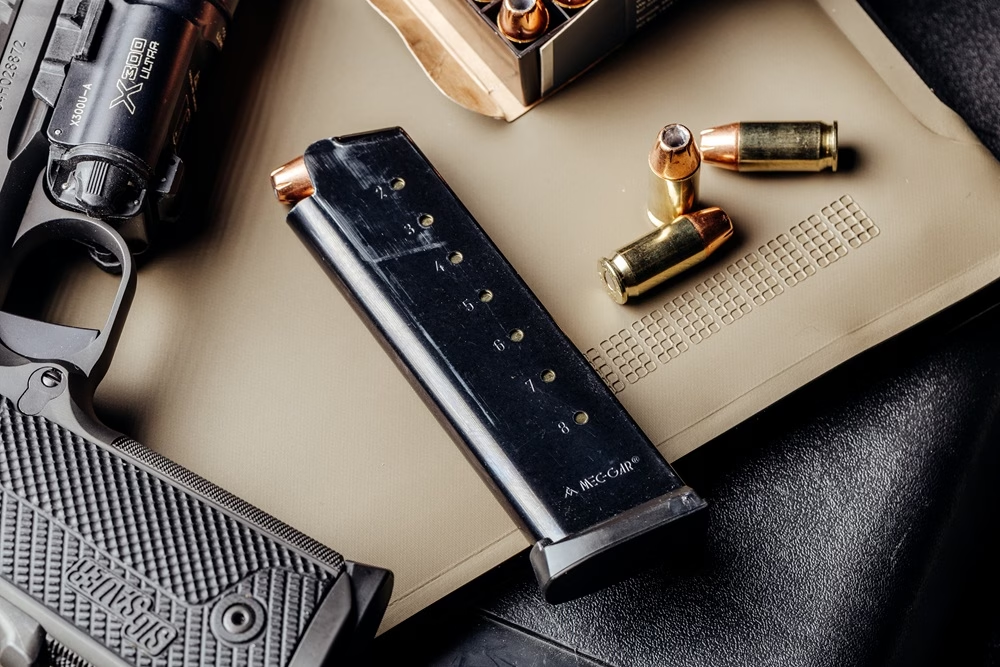
Are 1911 Magazines Universal?
A common question asked by new 1911 owners is whether their magazines are interchangeable across different frame sizes. Standard 1911s use the same magazine pattern, so they are ‘universal’ to a certain degree. So long as your magazine is long enough to be locked in by the mag catch, and it matches your pistol’s caliber chambering, you should be able to use it without any issues.
For instance, full-size magazines fit in smaller Officer size 1911s, but they’ll stick out past the bottom of the frame. There are extended magazines available for each frame size too, and they often come with a grip extension as well. They’re worth considering if you’re wanting to run an extended magazine in your 1911. Still, since there are so many manufacturers producing different 1911 magazine options, it’s a good idea to check compatibility charts to make sure they’ll work with your model 1911.
Conclusion
Having withstood the test of time, the 1911 remains as one of the most iconic pistols ever created. While the core design of the 1911 has stayed fairly unchanged over the course of its over 100 years of production, the platform has kept up with the times to better suit a more diverse array of needs and preferences.
From the robust and classic profile of Government model 1911s, to the lighter Commander, and more compact Officer size, the 1911 offers enough variety to provide something for everyone. And, with manufacturers continuing to produce 1911 pistols in each of the mentioned frame sizes, you’ll easily be able to find a model that’s tailored for your intended application.
At the end of the day, if the model you’re looking at checks off your boxes and fits your needs and application well, you can rest assured knowing you have the right one for you. If you’re thinking the 1911 might not be what’s best for you, we recommend checking out our guide on hammer-fired pistols. It breaks down multiple pistols in the same class as the 1911 and will serve as solid guide to help you out in your search for the right handgun.
